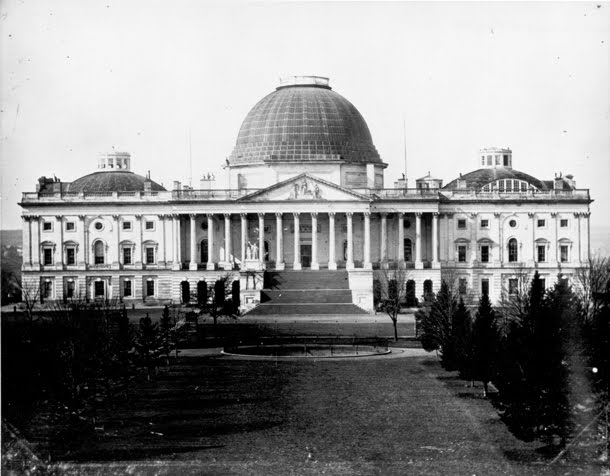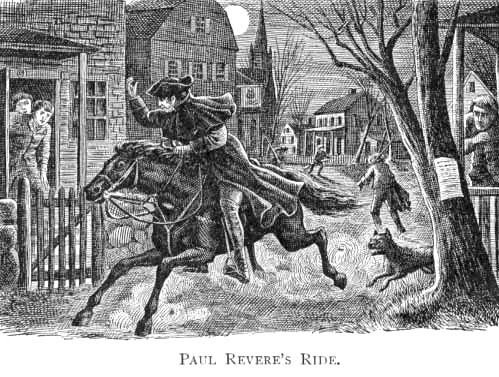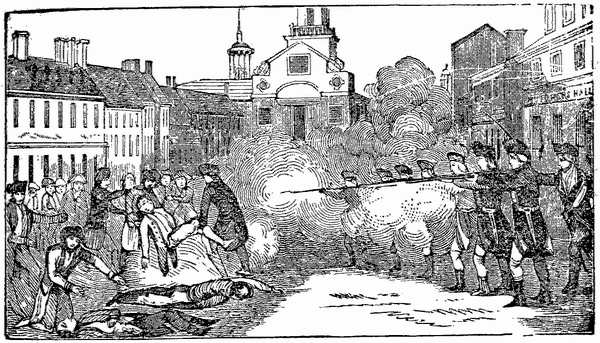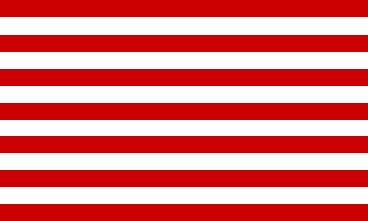From Lew Rockwell.com:
A Two-Front War On Gold
by Gary North
by Gary North
Recently by Gary North: Digital Education vs. the Ruling Elite
Politics makes strange bedfellows. In the person of Ben Bernanke, three streams of American politics have come together: Progressivism, Populism, and Populism's replacement, right-wing crackpot monetary theory.
There is a third front: Chicago School economics, sometimes called monetarism. It is anti-gold standard, but it is represented by Bernanke only by default, not in theory. Chicago School economists, in their terror of deflation and their pragmatism, remained silent or grudgingly supportive when the Federal Reserve doubled the monetary base in October of 2008. They committed intellectual suicide. They accepted in fact what in theory monetarism denies: Federal Reserve tinkering with the monetary base. This was no 3% to 5% increase per annum.
THE WAR ON GOLD
For well over a century, there has been a war on gold in the United States. This war has been comprehensive: ideas, politics, and finance. I have written a book on this, The Gold Wars. You can download it for free here.
The two Progressive-era anti-gold factions were opposed to each other. Members of the first group, known a century ago as the Populists, were socially conservative agrarians but economic radicals. They were debtors, and therefore they hated falling prices. They had to repay their loans in appreciating money. They were inflationists.
[Today, their intellectual heirs call themselves defenders of "sovereign money." With only 2% of the American population involved directly in farming, plus maybe 15% more as small-town farming support businesses, Populism is no longer viable politically. This has left the heirs of Populism without a political base. They have invaded the free market conservative movement in order to gain support. I shall explain this later in this report.]
The Populists' rivals were the Progressives. These people are socially liberal but economically conservative. They were associated with the Republican Party from the beginning of the Progressive movement in the mid-1880s.
They did not challenge the gold standard initially, 1885–1933. They wanted mass production, large industrial corporations, government protection for large businesses and cartels, and safe banks. When push came to shove in the recession of 1907, they opted for safe banks over sound money. They called for a central bank to guarantee safe banking.
Their commitment to central banking eventually moved them into the anti–gold standard camp, when central bank inflation became the driving force in the American economy. The intellectual heirs of these people today control academia, both political parties, banking, and the mainstream media.
The opponents of the traditional gold coin standard won the first phase of this war in the arena of national politics in November of 1904: Teddy Roosevelt's defeat of the Democrat, Alton B. Parker. This ended the rule of the Old Democracy: the pro-gold majority of the Democratic Party. The long-run significance of this was not clear to most people at the time, although gold's most vocal opponent recognized it: William Jennings "Cross of Gold" Bryan. It had taken him a mere eight years to overcome one of his two major enemies: the Democratic Party's majority faction, which favored the gold standard. Its incarnation was Grover Cleveland. Bryan's other enemy was the Eastern financial Establishment. Bryan permanently delivered the nation into its hands by destroying the Old Democracy.
THE THREE FACTIONS IN 1896
At the beginning of 1896, there were three major political factions in the United States:
1. The Old Democracy
2. The Progressives
3. The Populists
The Old Democracy was in power. Grover Cleveland was in his final full year as President. He was a pro-gold standard, low-tariff, low-taxes, limited-government Democrat. This had been the tradition of the Democrats ever since the party's origin under Jefferson a century earlier.
Cleveland had presided over a period of rapid economic growth. The gold standard had kept money stable. Increasing output had added to the nation's wealth, both in his second term in office and the earlier period: 1885–1889. In 1888, the Republicans re-gained the White House under Benjamin Harrison, but only just barely. Cleveland defeated Harrison in 1892.
There had been falling prices during his Administration and also under Harrison's. There had been economic growth. Yet the history textbooks' account of this era presents a picture of continual economic recession. This account is not supported by the evidence. Real wages rose by over 20%, 1879–89. Economist Murray Rothbard summarized the figures in his book, A History of Money and Banking in the United States (2002), pages 161–66.
Then, in 1890, Congress passed higher tariffs and also the Silver Purchase Act. Harrison signed these bills into law. In 1892, there was an international run on the gold supply of the U.S. – a bank run on the nation. Cleveland was elected in 1892. The panic ended in late 1893. Under Cleveland, the inflationary Silver Purchase Act was repealed.
The same story of economic growth in this post-Civil War era, 1867–1913, is found in the standard monograph by Milton Friedman and Anna J. Schwartz, "A Monetary History of the United States" (1963). But this story has not entered the textbooks. Only their criticism of the Federal Reserve System for not having inflated in the 1930–33 era is invariably cited. This reflects the pro-inflation bias of Keynesians, who write the textbooks.
At the Democrats' national convention in 1896, Bryan spoke last. He gave the most important political speech in American history: the Cross of Gold speech. With that speech, he ended the Old Democracy. He lost the election to McKinley, whose Vice President was the most ardent Progressive of all time, Teddy Roosevelt. McKinley beat Bryan again in 1900. His assassination in 1901 brought Roosevelt into the White House. He beat Parker in 1904. His handpicked successor, equally a Progressive, Skull & Bones member William Howard Taft, defeated Bryan in 1908. Cleveland had died that summer, before the election. The movement he represented was already dead. But Populism also died nationally with Bryan's third defeat.
With the election of 1912, the Progressives were triumphant: Roosevelt, Taft, and Wilson were all Progressives. The era of central economic planning began under Wilson: first with the income tax amendment, which was never ratified legally but which was announced as having been ratified ("The Law That Never Was"), by the Federal Reserve Act, which passed in 1913 and went into effect in 1914; then by World War I, which brought modern central planning into operation. The best account of this is the article by Murray Rothbard, "War Collectivism in World War I," which was printed in the book he jointly edited with Ronald Radosh, New History of Leviathan: Essays on the Rise of the American Corporate State (1972).
World War I ended the gold coin standard in Europe by the end of the first month: August 1914. The gold standard was re-established by Great Britain in 1925, but was then abandoned in 1931. Two years later, Franklin Roosevelt unilaterally made gold ownership illegal for Americans. That ended the last trace of the gold coin standard, where individuals could get gold coins for money on demand at a fixed price: $20.67 per ounce. The dollar was a legal IOU for gold coins until 1933.
It remained a legal IOU for gold bullion at a fixed price, $35 per ounce, but only for governments and central banks, until August 15, 1971, when Nixon unilaterally ended it on a Sunday afternoon. The gold window never opened on Monday. The political phase of the war on the gold standard was over.
ANTI-GOLD STANDARD AND ANTI-GOLD
It is possible to be pro-gold and anti-gold standard. Milton Friedman was. He was pro-gold in the same sense that he was pro-copper, pro-corn, and pro-pork bellies. He believed that governments should not control prices or substances. Gold from 1933 to 1975 was a controlled substance. Prior to its legalization in 1975, Friedman protested the law. But he was an advocate of a fiat money standard. He supported the Federal Reserve System as a concept. He favored free pricing in commodities and currencies. In currencies, this was called floating exchange rates. Under a gold standard, currencies do not float. Instead, central banks or national government Treasuries suffer inflows or outflows of gold. Under a fiat money standard, currencies float, but central banks and Treasuries do not suffer gold inflows or outflows.
The ban on gold ownership had been part of a systematic war on gold in 1933. Roosevelt had been told by economists that if the New Deal spent more money, and the Federal Reserve inflated, prices would rise. This would help get the economy moving again, they insisted. This was pre-Keynesian doctrine, and it was enacted into law years before Keynes wrote his incoherent, convoluted defense of this practice in The General Theory of Employment, Interest, and Money in 1936.
This spend-and-print logic appealed to the farm bloc, which had been anti-gold ever since the post-Civil War era. Farmers were constantly in debt, and they preferred rising prices for their crops. This logic had also become popular with big business by 1933. First the Republican Congress under Herbert Hoover and then the Democrats under Roosevelt imposed price floors, which kept the economy from recovering. Prices could not clear at the legal prices, which were set above market prices. Rothbard explained this in his book, America's Great Depression (1963) and also in his article, "Herbert Hoover and the Myth of Laissez-Faire," in History of the New Leviathan.
The war on gold in the 1930s was comprehensive: intellectual, political, and financial. The Republican Establishment became anti-gold, pro-central bank. The Democrats gained control in 1933 and never again returned to a pro-gold position. Bryan had gutted the Old Democracy, and by 1933, the Populists in rural areas were pro-Roosevelt. In 1936, Roosevelt carried every state except Maine and Vermont. The political victory of the Progressives was complete. They have never surrendered power. They are in total control. This is a long tradition. Any break with this control and ideology must be seen as radical today. This is why Austrian School economics is radical.
After 1908, there was a separate tradition of fiat money Populism inside the Democratic Party, one that had separated from agrarianism. Its most famous advocate was Congressman Wright Patman of East Texas. He served from 1929 to his death in 1976. He believed in big government, but he hated the Federal Reserve. He presided over the House Banking Committee for a decade, 1965–75.
The other figure is forgotten today. He was a Congressman from southern California, Jerry Voorhis. Voorhis wrote a pro-fiat money book, Out of Debt, Out of Danger, in 1943. He was a Social Gospel promoter and had been a socialist early in his career. He believed in state ownership of all capital. He joined with Patman to force the Federal Reserve System to pay back to the government all interest income above its operating expenses. That was the single most damaging law ever forced on the FED. Before this, the money had gone to the banks (secret) that owned the shares in the system. He was an anti-Communist, the author of the anti-Communist Voorhis Act of 1940, and he served on the House Committee on UnAmerican Activities until he resigned the position in 1943. He served for five terms before he was defeated by a political unknown in 1946, Richard Nixon.
THE SOVEREIGN MONEY MOVEMENT
The tip-off that something is not quite right is the association of sovereignty with money. Sovereignty is a legal term. It refers to government immunity from civil procedure. It implies "final court of appeal." Four hundred years ago, this doctrine of sovereignty was called the divine right of kings.
Why should money have a divine right? Why should any divine-right agency have a legal monopoly of control over the money supply? Why should money be sovereign? In other words, why should it be immune from the pricing of the free market, based on private ownership?
What economic logic makes money uniquely a non-market phenomenon? What makes money a non-market institutional arrangement? What makes tenured bureaucrats in the Treasury wise enough to control the money supply, including who should receive zero-interest (subsidized) loans from the government? Talk about a potential for corruption!
The phrase "sovereign money" refers to an exclusively fiat money system in which the government controls the monetary base. The Federal Reserve would be abolished. Sovereignty in the case refers to the national government. Control over money would lodge in the government. This would have to mean the Executive branch. The rules must be enforced; the Executive enforces the rules.
The government would not face direct threats from the public in the form of a run on the government's gold. There would be no gold standard. There would be no limit on how much money the government could legally create. The movement has always been inflationist. It calls for the creation of money to fund the economy, equating this expansion with an increase in capital. There would be no interest charged on loans from government money creation.
It is never clear what would happen to the gold on the FED's books at $42.22 per ounce. Would it be auctioned off? To whom? When? On what terms? In what form?
Proponents of sovereign money have infiltrated the conservative political movement for the last five decades. They have gained entrance under a banner that says, "End the FED!" They are hostile to the Federal Reserve. But on what economic basis? This: because the FED is in part private. They want control over the money supply to be 100% in the hands of the Federal government.
These people are monetary socialists. They see capital as a monetary phenomenon. They believe that capital is essentially free. So, the government should be in control of the distribution of the tickets that give people access to free capital. Any price on capital – an interest rate – they see as immoral. It is extortion by bankers. They want interest payments abolished by law.
This is standard socialist utopianism: free capital, free money, free time. There really is no scarcity, they say.
The most famous partisan of this view was John Maynard Keynes. Keynes taught this about capital in "The General Theory." I have covered this long-suppressed fact in my article, "Keynes, Crackpots, and Deflation."
The University of Chicago economist, Henry C. Simons, reviewed Keynes's General Theory for the Social Gospel magazine, The Christian Century (July 22, 1936). This article was long neglected because it did not appear in a professional academic journal. Simons shrugged off Keynes's affirmation of monetary crank doctrines with these words: "sophistical academic leg-pulling."
This was a corrupt form of scholarship: pretending a universally respected master had not adopted sheer crackpottery, dismissing a major conceptual error with a light-hearted quip. "He could not have taught this – it is nonsense, crackpottery." But he did teach it, and it was crackpottery.
CONCLUSION
Here is the strange conclusion: the utter nonsense of zero-cost capital, meaning interest rates at zero, was promoted by the economist who is most associated with the modern Progressive movement: Keynes.
This doctrine is now being implemented by Keynes's most influential academic disciple, Princeton University professor Ben Bernanke. The federal funds rate is at zero or close to it.
Even more strange, the "sovereign money" non-economists promote the same doctrine. They are inside the conservative movement. This is why I call them false flag infiltrators.
In short, politics makes strange bedfellows. So does the desire to get something (capital) for nothing (zero interest rates). This is what modern politics is all about: getting something for nothing.
August 11, 2010
Gary North [send him mail] is the author of Mises on Money. Visit http://www.garynorth.com. He is also the author of a free 20-volume series, An Economic Commentary on the Bible.
Copyright © 2010 Gary North
Tuesday, August 10, 2010
Subscribe to:
Post Comments (Atom)
.gif)






























No comments:
Post a Comment